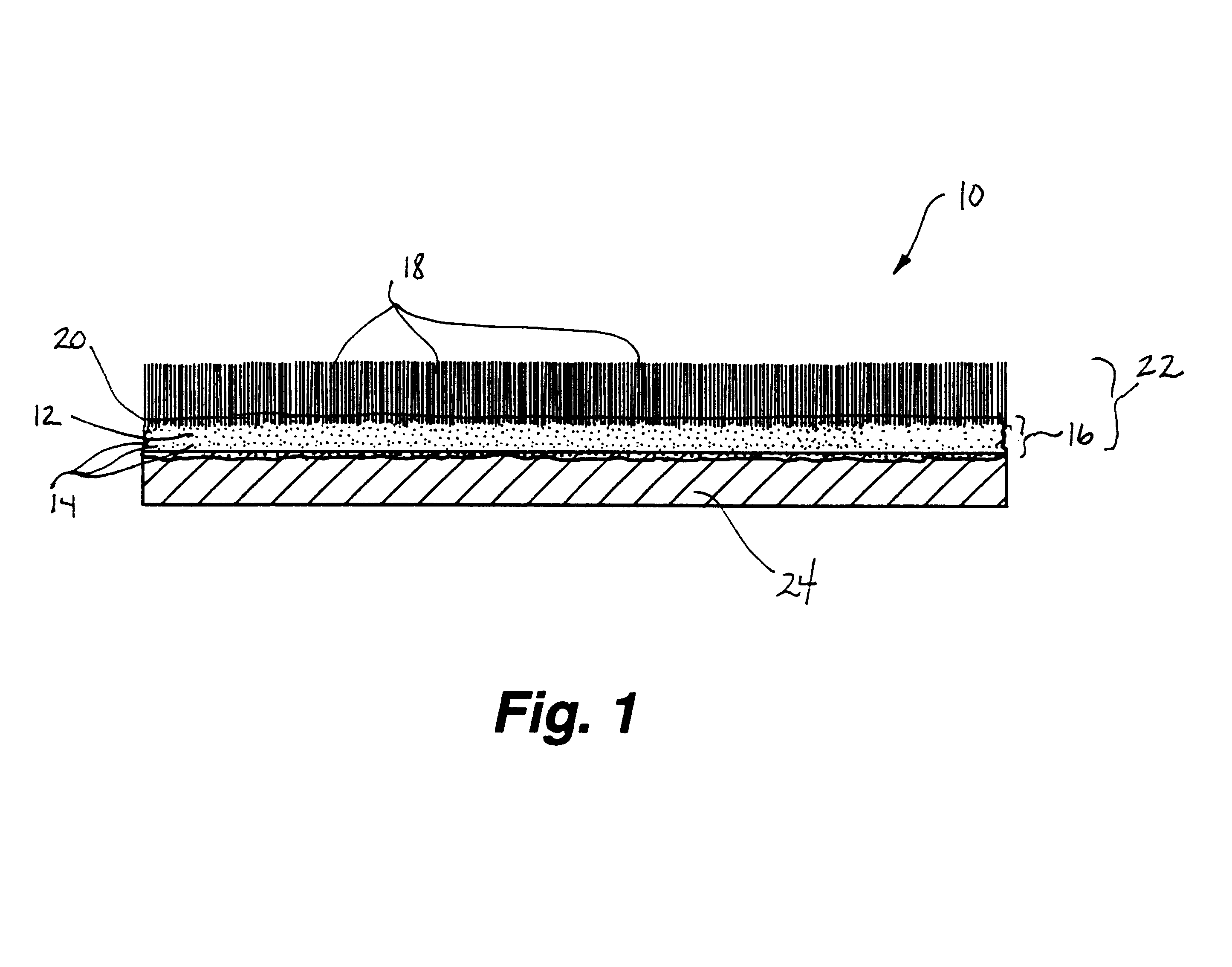Fabric coating containing energy absorbing phase change material and method of manufacturing same
a technology of phase change material and manufacturing method, which is applied in the direction of weaving, other chemical processes, lighting and heating apparatus, etc., can solve the problems of unsatisfactory use of phase change material microspheres in thermoplastic gravure printing techniques, and the failure of solvent-based gravure printing techniques to achieve uniform dispersion of microspheres in binders
- Summary
- Abstract
- Description
- Claims
- Application Information
AI Technical Summary
Benefits of technology
Problems solved by technology
Method used
Image
Examples
example ii
An alternative coating formulation where high phase change material content and limited extensibility is required, for example with non- or low-stretch fabrics such as non-woven or woven fabrics, is prepared as shown in Table III.
Addition of microspheres as described above in the preferred weight ratios eliminates tack and prevents blocking of the coated fabrics typically experienced with coatings having low glass transition temperature polymers such as those based on acrylic latex polymers. Tack, the tendency of material to stick to itself, can make rolls of coated fabric difficult to unroll. This can occur when rolls of coated fabric are stored in warm places or are stored under pressure of rolls stacked on top of one another. Antiblocking additives are typically added to coating formulations to prevent tack. The presence of microspheres in the coatings of the present invention eliminates the need for antiblocking additives.
Non-foam coating compositions like those described in Exa...
example iii
A preferred foam coating formulation of the present invention may be used with breathable fabric to maintain the heat and moisture dissipation capability of the fabric. In this example, the materials are subject to mechanical frothing. Foam stabilizers are added to maintain the foam after application to the fabric. Foam stabilizers may be inorganic salts of fatty acids or their sulfate partial esters, anionic surfactants, among other compounds. Preferred foam stabilizers for use with phase change material microspheres are sodium lauryl sulfate, ammonium stearate, di-sodium-n-octadecyl sulfosuccinamate and mixtures thereof. Ammonium stearate concentrations (dry as a percent of wet coating) of 0.5% to 6% plus 0.2% to 4% sulfosuccinamate are most preferred. The coatings are prepared as shown in Table IV.
Preferred foam coatings contain ammonium stearate in an amount by dry weight of from 0.25% to 10% of the total weight of the final wet coating composition foam is preferred and from 0.1...
example iv
Tests were conducted on acrylic fleeces in which the fibers containing microPCMs, and on non-woven materials (sometimes referred to herein as "substrate") having a coating containing microPCMs. Acrylic fleeces without microPCMs having approximately the same weight per unit area as the fleeces with microPCMs, and substrates without microPCMs having the same thickness as the non-woven substrates having a coating containing microPCMs, served as comparison materials. Specific data regarding the sample materials tested are included in Table V.
The content of microPCM in the acrylic fleeces was approximately 10 per cent. About 7 g / m.sup.2 microPCM was included in the coating of the non-woven substrate. This is equal to a content of microPCM of about 3%. The phase change temperature of the microPCM material ranged from about 22.degree. C. to about 25.degree. C.
Tests of water-vapor permeability and water-vapor absorption of the materials were based upon the test methods of the standards DIN ...
PUM
| Property | Measurement | Unit |
|---|---|---|
| ultimate elongation at break | aaaaa | aaaaa |
| temperature | aaaaa | aaaaa |
| elongation at break | aaaaa | aaaaa |
Abstract
Description
Claims
Application Information
 Login to View More
Login to View More - R&D
- Intellectual Property
- Life Sciences
- Materials
- Tech Scout
- Unparalleled Data Quality
- Higher Quality Content
- 60% Fewer Hallucinations
Browse by: Latest US Patents, China's latest patents, Technical Efficacy Thesaurus, Application Domain, Technology Topic, Popular Technical Reports.
© 2025 PatSnap. All rights reserved.Legal|Privacy policy|Modern Slavery Act Transparency Statement|Sitemap|About US| Contact US: help@patsnap.com


